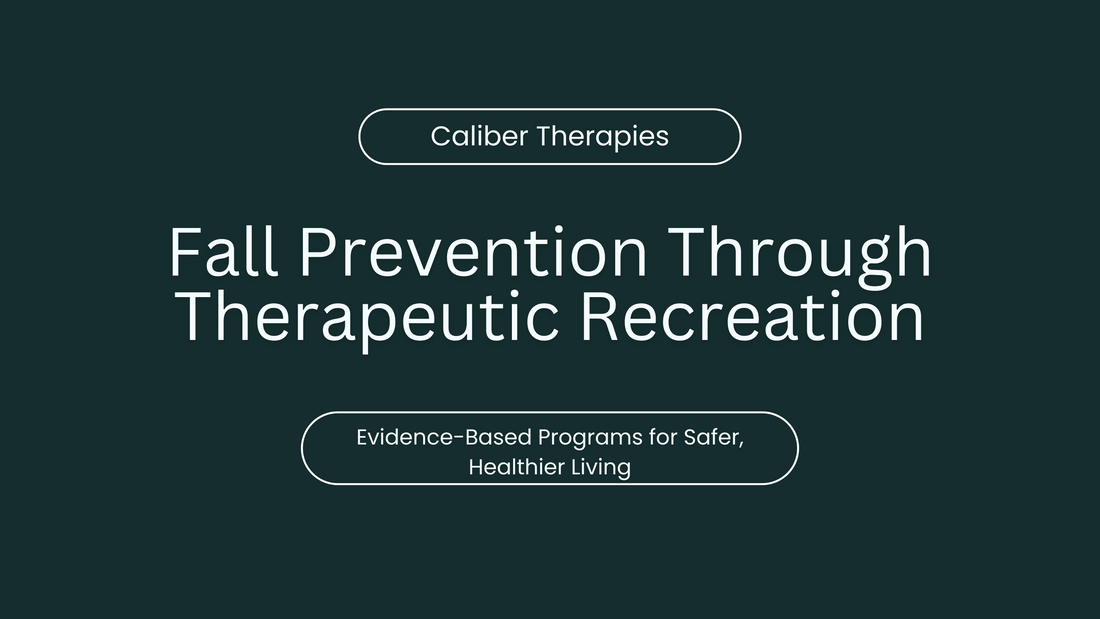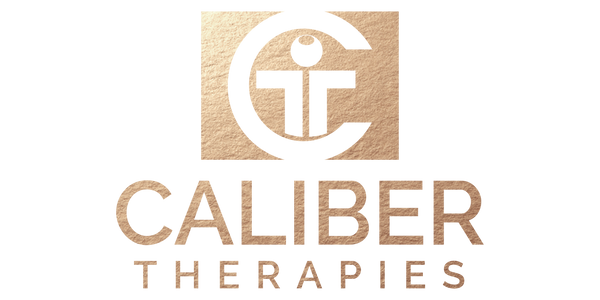
Fall Prevention Through Therapeutic Recreation: Evidence-Based Programs for Safer, Healthier Living
Share
Every year, millions of older adults face a frightening reality: one out of four seniors will experience a fall. For many, that single moment changes everything. Beyond the immediate physical injury, falls often trigger a cascade of consequences including loss of independence, decreased confidence, and a reluctant withdrawal from the activities that bring joy and meaning to life.
Traditional fall prevention approaches have typically focused on clinical exercises or home safety modifications. While these strategies have merit, they often fail to address the complex, interconnected factors that contribute to fall risk. More importantly, they frequently lack the engaging, enjoyable qualities that encourage long-term participation and lifestyle change.
Enter therapeutic recreation a revolutionary approach that transforms fall prevention from a chore into an anticipated highlight of the week. Instead of repetitive exercises in sterile clinical settings, participants find themselves dancing, playing games, practicing tai chi, or splashing in warm pools. Yet beneath the fun and social connection lies serious, evidence-based intervention that can reduce fall risk by up to 30%.
Understanding the Fall Crisis
Falls represent far more than simple accidents. They're the leading cause of injury-related death among adults over 65, sending someone to the emergency room every 11 seconds and claiming a life every 19 minutes. The numbers alone tell a sobering story: over 36 million falls annually result in more than 32,000 deaths and cost our healthcare system over $50 billion.
What Makes Therapeutic Recreation Different
Imagine walking into a typical physical therapy clinic versus entering a therapeutic recreation center. The clinical setting might feature exercise equipment, treatment tables, and the antiseptic smell of medical facilities. Participants dutifully perform prescribed exercises under professional supervision, checking off completed repetitions and focusing on deficits that need correction.
Now picture the therapeutic recreation environment: upbeat music plays as a group practices gentle dance movements, laughter echoes from a water aerobics class, and participants in a tai chi session move gracefully together in synchronized harmony. The atmosphere buzzes with social interaction, mutual encouragement, and genuine enjoyment.
Both settings aim to improve physical function, but the therapeutic recreation approach recognizes that humans are complex beings whose physical health intertwines with emotional, social, and cognitive well-being. Certified therapeutic recreation specialists understand that a person's willingness to participate, their confidence in their abilities, and their social connections all influence their fall risk as much as their physical strength or balance.
This holistic perspective shapes every aspect of program design. Rather than isolating balance training as a separate activity, therapeutic recreation naturally incorporates stability challenges into dance routines, art projects, or games. Instead of focusing solely on lower body strength, activities engage the whole person—mind, body, and spirit—in meaningful experiences that happen to achieve therapeutic goals.
The Science Behind the Fun
The effectiveness of therapeutic recreation for fall prevention rests on solid scientific ground. Multiple Cochrane reviews—the gold standard of medical evidence—consistently demonstrate that multicomponent programs combining balance, strength, and functional training reduce fall rates by 20-30% in community-dwelling older adults.
What makes these programs work goes beyond the obvious physical benefits. Neuroscience research reveals that enjoyable activities trigger the release of neurotransmitters like dopamine and endorphins, which enhance learning, memory formation, and motivation. When people enjoy what they're doing, their brains are primed for positive adaptation and skill acquisition.
The social component adds another layer of effectiveness. Group activities combat isolation a significant risk factor for falls that's often overlooked in traditional approaches. Social connections provide motivation for attendance, emotional support during challenges, and peer modeling that demonstrates what's possible.
Cognitive engagement represents another crucial element. Real-world fall situations rarely occur during simple, predictable movements. Most falls happen when people are distracted, hurried, or managing multiple tasks simultaneously. Therapeutic recreation programs naturally incorporate these "dual-task" challenges dancing while following complex choreography, playing games that require quick decision-making, or navigating obstacle courses while carrying on conversations.
Comprehensive Benefits Beyond Balance
While fall prevention serves as the primary goal, participants often discover that therapeutic recreation programs improve their lives in unexpected ways. Physical benefits extend far beyond balance and strength. Cardiovascular health improves through enjoyable aerobic activities like dancing or water aerobics. Flexibility increases through tai chi and yoga-inspired movements. Bone density stabilizes through weight-bearing activities that don't feel like exercise.
The cognitive benefits surprise many participants and their families. Complex recreational activities requiring planning, decision-making, and problem-solving strengthen executive function skills crucial for daily living. Quick-reaction games enhance processing speed, while navigation activities improve spatial awareness. These cognitive improvements often translate into better driving safety, more effective household management, and increased confidence in complex environments.
Mental health improvements represent perhaps the most profound benefit. Depression and anxiety common among older adults and significant fall risk factors—often decrease dramatically through regular participation in enjoyable, social activities. Participants report feeling more optimistic, sleeping better, and experiencing renewed sense of purpose and capability.
Real Programs, Real Results
Successful therapeutic recreation programs come in many forms, each adapted to specific populations and settings. Dance programs have shown particularly impressive results. Ballroom dancing provides partner support and social connection while challenging balance, coordination, and cardiovascular health. The complex movement patterns stimulate brain plasticity, while the musical component provides external cueing that helps with timing and rhythm.
Water-based programs offer unique advantages, especially for those with joint problems or mobility limitations. The buoyancy of water reduces fall risk during exercise while providing natural resistance for strength training. Participants often attempt movements in water that they wouldn't dare try on land, building confidence and expanding their perception of their capabilities.
Tai chi represents perhaps the most researched therapeutic recreation intervention for fall prevention. This ancient practice combines slow, controlled movements with meditation and breathing techniques. The weight-shifting exercises strengthen postural muscles, while the mindfulness component enhances body awareness and attention skills. Studies consistently show that regular tai chi practice reduces fall risk while improving balance confidence and overall quality of life.
Modified sports and games provide familiar, enjoyable frameworks for therapeutic intervention. Volleyball with a lower net and lighter ball challenges reaction time and coordination. Seated basketball develops upper body strength and hand-eye coordination. Lawn games like bocce ball and horseshoes encourage social interaction while providing opportunities for balance challenges and strategic thinking.
Program Design and Implementation
Effective therapeutic recreation programs begin with comprehensive assessment that goes far beyond simple balance tests. Specialists evaluate not just physical capabilities but also interests, goals, cultural backgrounds, and personal motivations. This holistic assessment informs individualized program design that resonates with each participant's unique circumstances and preferences.
The best programs start conservatively and progress gradually, allowing participants to build confidence alongside physical capabilities. Early sessions focus on establishing safety, building group cohesion, and helping participants discover their strengths. As comfort and ability increase, activities become more challenging while maintaining the supportive, enjoyable atmosphere that encourages continued participation.
Safety remains paramount throughout all activities, but it's woven seamlessly into the experience rather than feeling restrictive or anxiety-provoking. Environments are carefully designed to minimize hazards while maximizing opportunities for appropriate risk-taking. Staff maintain constant awareness of each participant's capabilities and limitations while encouraging gradual expansion of comfort zones.
Finding the Right Program
With the growing recognition of therapeutic recreation's effectiveness, programs are becoming more widely available through healthcare systems, community centers, senior centers, and specialized facilities. However, quality varies significantly, making careful evaluation essential.
The most important factor is staff qualifications. Look for programs led by Certified Therapeutic Recreation Specialists (CTRS) with specific training in fall prevention and gerontology. These professionals understand both the science of fall prevention and the art of creating engaging experiences that motivate long-term participation.
Evidence-based programming represents another crucial quality indicator. Effective programs incorporate validated assessment tools, proven intervention strategies, and systematic outcome measurement. They should be able to explain their approach, provide references to supporting research, and demonstrate their effectiveness through participant outcomes.
The best programs also demonstrate cultural competency and inclusivity. They adapt activities to accommodate diverse backgrounds, abilities, and preferences. Materials and instruction are available in multiple languages when needed, and programming reflects sensitivity to various cultural approaches to aging and health.
Extending Benefits Beyond the Program
The ultimate goal of therapeutic recreation extends beyond the scheduled program sessions to lifestyle change that reduces fall risk in daily life. The most effective programs actively work to help participants integrate fall prevention strategies into their everyday routines and environments.
Home safety education represents a crucial component, but it's delivered through practical, hands-on learning rather than abstract lectures. Participants might practice navigating obstacles similar to those in their homes, learn proper techniques for reaching and lifting, or role-play responses to balance challenges.
Family and caregiver education enhances outcomes when loved ones understand and support the program goals. Educational sessions help family members recognize fall risk factors, understand appropriate levels of assistance versus independence, and learn how to encourage continued activity without being overprotective.
The Road Forward
If you're concerned about fall risk—whether for yourself or a loved one—the path forward begins with honest assessment and professional guidance. Many people wait until after a fall to seek help, but prevention is always preferable to reaction.
Start by discussing concerns with your healthcare provider, who can assess fall risk factors and provide referrals to appropriate programs. Research programs in your community, asking important questions about staff qualifications, safety protocols, and evidence-based practices.
Remember that starting a fall prevention program represents an investment in your future independence, safety, and quality of life. The confidence and skills you develop will serve you for years to come, enabling you to continue engaging in the activities and relationships that make life meaningful.
In Conclusion, Fall prevention through therapeutic recreation represents more than just another healthcare intervention—it's a paradigm shift that recognizes the fundamental human need for joy, connection, and meaningful activity. By transforming fall prevention from a clinical necessity into an anticipated pleasure, these programs achieve remarkable success in reducing injuries while enhancing overall quality of life.
The evidence is clear: well-designed therapeutic recreation programs can significantly reduce fall risk while providing benefits that extend far beyond injury prevention. For individuals and families facing the challenges of aging, these programs provide hope and practical pathways to safer, more active, and more fulfilling lives.
Frequently Asked Questions
Who should consider therapeutic recreation for fall prevention? Anyone over 50 who has experienced falls, near-falls, or concerns about balance should consider these programs. They're particularly beneficial for people with chronic conditions like arthritis, diabetes, or neurological disorders.
How do these programs differ from regular exercise classes? Therapeutic recreation programs are led by certified specialists who design activities specifically to target fall risk factors while maintaining engagement and enjoyment. They incorporate cognitive challenges, social interaction, and functional skills that translate directly to daily living situations.
How long before I see results? Many participants report improved confidence and balance within 2-4 weeks of starting a program. Measurable improvements in strength, balance, and function typically occur within 6-8 weeks.
Are these programs safe for people with multiple health conditions? Yes, when properly designed and supervised. Quality programs include comprehensive assessment, medical clearance processes, and individualized modifications for various health conditions and ability levels.
Will insurance cover these programs? Coverage varies by insurance plan and program type. Medicare may cover some programs when prescribed by physicians. Many insurance plans increasingly recognize the value of fall prevention and provide coverage.
What should I look for in a quality program? Seek programs led by Certified Therapeutic Recreation Specialists with fall prevention training, evidence-based curricula, comprehensive assessment processes, individualized programming, and clear safety protocols.
